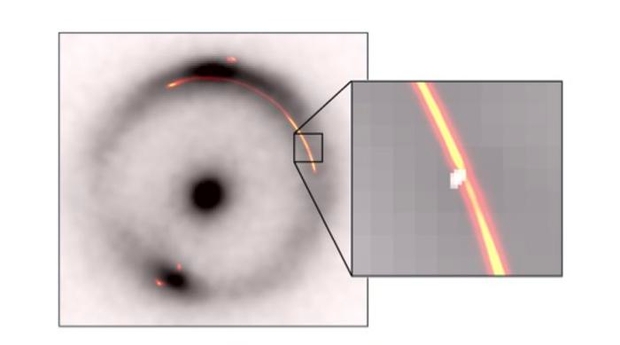We are fortunate enough to be living in the greatest era of discovery in the history of our species. Astronomical observations through ever more sensitive instruments are deepening our view of the cosmos, and just as satisfyingly, forcing questions about its past and uncertain future. I’d much rather live in a universe with puzzling signs of accelerated expansion (still subject to robust debate) and evidence of matter that does not interact with the electromagnetic force (dark matter) than in one I could completely explain.
Thus the sheer enjoyment of mystery, a delight accented this morning as I contemplate the detection of a so-called ‘dark object’ of unusually low mass. Presented in both Nature Astronomy and Monthly Notices of the Royal Astronomical Society, the papers describe an object that could only be detected through gravitational lensing, a familiar exoplanet detection tool that reshapes light passing near it. With proper analysis, the nature of the distortion can produce a solid estimate of the amount of matter involved.

Image: The black ring and central dot show an infrared image of a distant galaxy distorted by a gravitation lens. Orange/red shows radio waves from the same object. The inset shows a pinch caused by another, much smaller, dark gravitational lens (white blob). Credit: Devon Powell, Max Planck Institute for Astrophysics.
We wouldn’t have any notion of dark matter were it not for the fact that while we cannot see it via photons, it does interact with gravity, and was indeed first hypothesized because of the anomalous rotation of distant galaxies. Fritz Zwicky was making conjectures about the Coma Cluster of galaxies way back in the 1930s, while Jan Oort pondered mass and observed motion of the Milky Way’s stars in the same period. It would be Vera Rubin in the 1970s who reawakened the study of dark matter, with her observations of stellar rotation around galactic centers, which proved to be too fast to be explained without additional mass, meaning mass that we currently couldn’t see.
The present work involves the Green Bank Telescope in West Virginia, the Very Long Baseline Array in Hawaii and the European Very Long Baseline Interferometric Network, which creates a virtual telescope the size of Earth. Heavy-hitter instrumentation for sure, and all of it necessary to spot the infinitesimal signals of the gravitational lensing created by this object.
Devon Powell (Max Planck Institute for Astrophysics, Germany is lead author of the paper in Nature Astronomy:
“Given the sensitivity of our data, we were expecting to find at least one dark object, so our discovery is consistent with the so-called ‘cold dark matter theory’ on which much of our understanding of how galaxies form is based. Having found one, the question now is whether we can find more and whether the numbers will still agree with the models.”
An interesting question indeed. It raises the question of whether dark matter can exist in regions without any stars, and offers at least a tentative answer. Or will we subsequently learn that this object is something a bit more prosaic, a compact and inactive dwarf galaxy from the very early universe? The authors point out that this is the lowest mass object ever found through gravitational lensing, which points to the likelihood that future searches will uncover other examples. We’re clearly at the beginning of the study of dark matter and remain ignorant of its makeup, so we can expect this work to continue. New lens-modeling techniques and datasets taken at high angular resolution provide the tools needed to make images more detailed than any before taken of the high-redshift universe and gravitationally lensed objects.
From the Powell et al. paper:
Strong gravitational lensing offers a powerful alternative pathway for studying low-mass objects with little to no EM luminosity. A spatially extended source in a galaxy-scale strong lens system acts as a backlight for the gravitational landscape of its lens galaxy, revealing low-mass perturbers through their gravitational effects alone. Furthermore, lens galaxies typically lie in the redshift range 0.2 ≲ z ≲ 1.5, which means that low-mass, low-luminosity objects can be detected and studied across cosmic time. To date, observations of galaxy-scale lenses with resolved arcs have been used to detect three low-mass perturbers: discovered by Hubble, Keck and ALMA…[E]xpanding the mass range that we can robustly probe necessitates that we use strong lens observations at the highest possible angular resolution.
The first paper is Powell et al., “A million-solar-mass object detected at a cosmological distance using gravitational imaging,” Nature Astronomy 4 March 2025. Full text. The second paper is McKean et al., “An extended and extremely thin gravitational arc from a lensed compact symmetric object at redshift of 2.059.” Monthly Notices of the Royal Astronomical Society Vol. 544, Issue 1 (November, 2025), L24-30. Full text.


